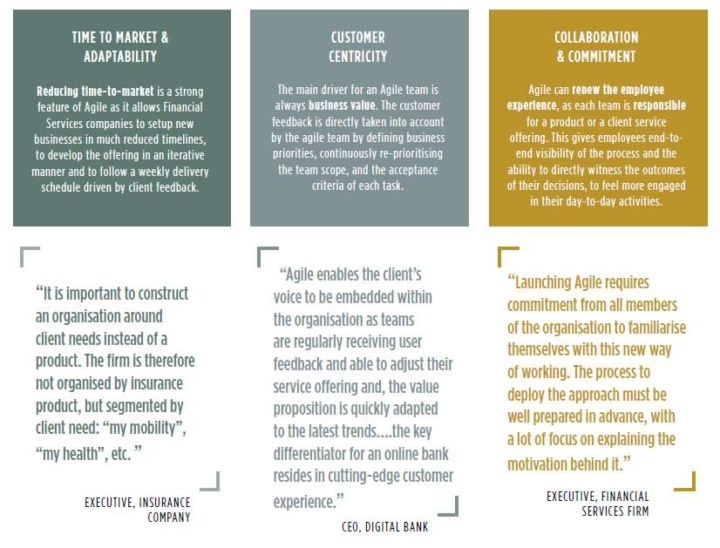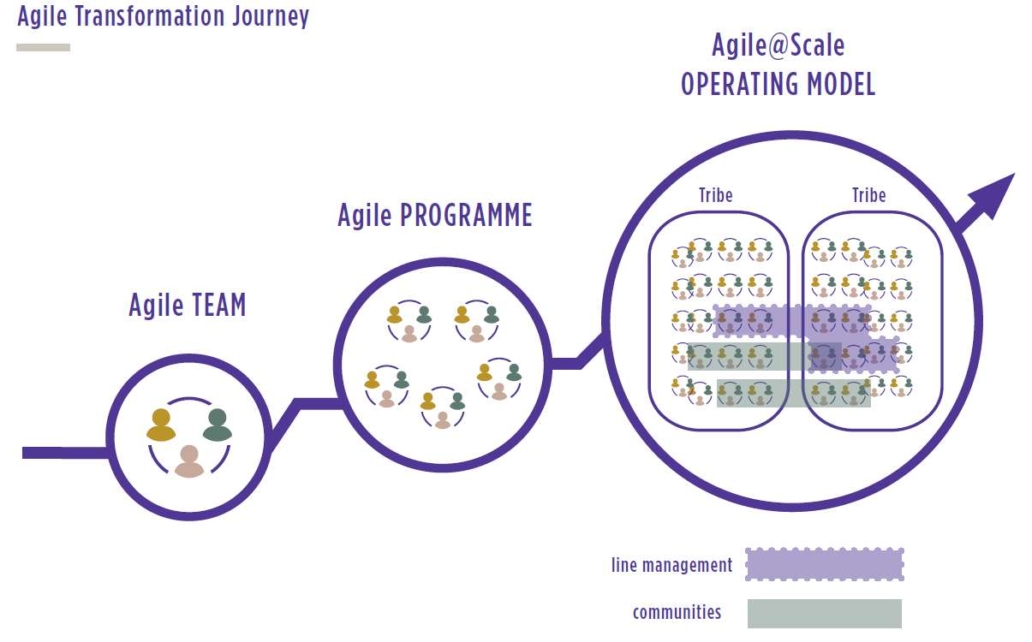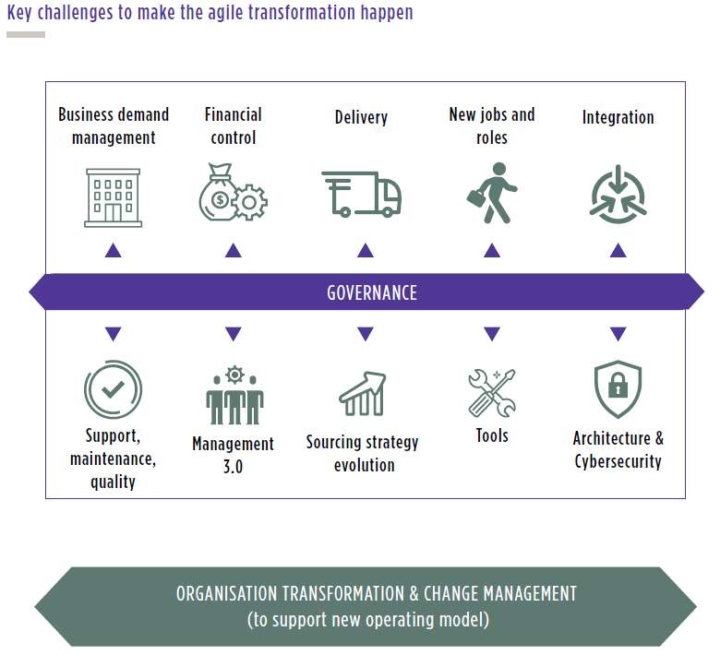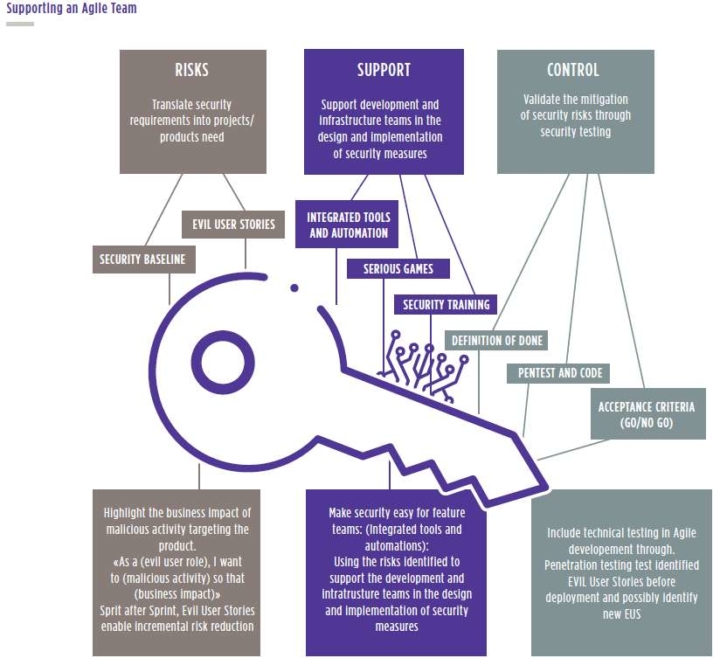From operational teams to executive managers, everyone seems to have their own definition and understanding of what Agile might be and mean. The word itself has been so overused that the initial meaning has regrettably been watered-down. The question today is not anymore “should our company scale Agile to the whole organisation?” but “how to scale Agile to the whole organisation?”.
The aim of this insight is to shed some light on what an Agile Financial Services firm can look like in practical terms, by sharing the drivers that have led our clients to become Agile, the new operating model, the key success factors and complications that arise from adopting Agile. To ultimately answer the question: How can you become Agile, safely?
The Financial Services Landscape is Driving Change
It’s clear that the Financial Services landscape is continually evolving with an even greater focus on customers and the experience offered to them:
- Financial Products are now being offered by FinTech, E-commerce platforms and technology service providers, as well as Banks and Insurance firms.
- Ecosystems of providers and portfolios of products that cater for customers’ key life stages or needs are evolving and are closely linked to financial products.
- Customer access to products is increasing through online and mobile mechanisms.
- Customer choice and competition is enhanced through The Payment Services Directive (PSD2) and Open-Banking by making – with customers’ consent – customer data available to 3rd parties.
- Margins of many financial services products are being reduced.
Financial products and services have become very sophisticated in terms of how they are technically created and delivered. Employing Big Data, Analytics, AI and Machine Learning are now core capabilities needed to deliver a personalised customer experience. The same technologies are used to detect and reduce the risks of security breaches and fraud. The use of Cloud is providing scalability, flexibility and efficiency
How can Agile solve Financial Services Companies Challenges?
The Journey to become an Agile Organisation
In order to make an Agile Transformation journey a success, organisations must have a sound knowledge of the core success factors, with a clear view on how to make it work for specific requirements and also understand where the key areas of change will be and the likely pain points that could occur.
THE CORE SUCCESS FACTORS OF AGILE TRANSFORMATION
Agile transformations can take many forms, but there are several success factors that must be adhered to:
/ Senior Management Sponsorship
/ Multi-disciplinary teams (also known as squads or feature teams)
/ Cross-functional collaboration
/ Senior Management engagement and active decision-making
HOW TO MAKE AGILE WORK FOR YOUR REQUIREMENTS
WHAT ARE THE MAIN AREAS OF CHANGE WHEN IMPLEMENTING AGILE AT SCALE?
Business Demand Management: This involves becoming client centric with shorter cycles between receiving and executing against the demand, whilst remaining aligned with strategy.
Financial Control: The focus shifts to value streams rather than budgeting by department or projects.
Creating and implementing the new ways of working includes adopting Agile methods, changing employees’ roles and
responsibilities, and – crucially – changing Management’s approach.
Delivery: In an Agile world, more value is expected to be delivered faster, alongside the ability to constantly adapt to changing demands and foster continuous improvement.
New Jobs & Roles: Establishing the new operating model must include defining new roles and responsibilities.
Integration: Multi-functional and autonomous teams will be created where the traditional separation between development and production becomes redundant.
Support, Maintenance, Quality: Teams or squads should become responsible for both building and running applications to drive efficient and effective support, maintenance and quality of services.
Management 3.0: Agile requires managers to become servant leaders, who foster experimentation, taking initiative and cooperation between people.
Engaging and managing external vendors and partners is frequently left to procurement, but for Agile, the future role of these external parties – in day-today activities and commercially – must be considered and planned for.
Sourcing: Current contracts need to facilitate increased sourcing flexibility. Many providers are at an early stage of recognising Agile in their commercials.
Tooling underpins and accelerates cooperation, design activities and continuous delivery. Consideration and integration of
Operations and Service Management tooling is key to enable an effective feedback loop.
Global consistency across development and operations to meet architecture and security requirements is imperative. This must to span interfaces, applications, infrastructure, data, integration layers and to work across providers and partners.
How to Remain Secure, whilst Changing your Business
In our experience the strategy to be adopted must recognise the hacker’s perspective alongside corporate and regulatory requirements. Our method therefore guides our clients to define their strategy and implementation roadmap in terms of their current levels of attractiveness, maturity and full stop instead of colon.
The typical areas of support our clients seek as they adapt Security to embed it with Agile include: Strategy, Target Operating Model, Security Automation Architecture, Crisis Management.
What to keep in mind
By way of conclusion, keep in mind that when it comes to organisation, people and change management, there can’t be one single solution. Every company is different. Every company has its own legacy and history. Our ultimate advice would be to take inspiration from the examples and recommendations detailed in this paper and from your peers. Compose your own journey that will make your organisation more Agile successfully and safely.







